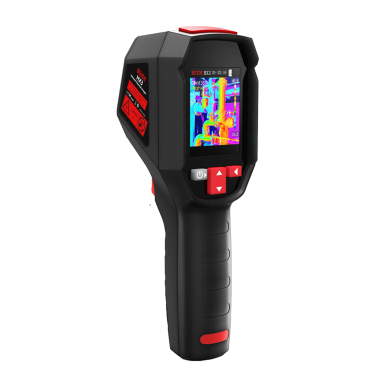
# Infrared Thermometer: Essential Tool for Accurate Temperature Measurement
## What is an Infrared Thermometer?
An infrared thermometer is a non-contact temperature measurement device that detects infrared energy emitted by objects and converts it into a temperature reading. These devices have become increasingly popular in various industries due to their ability to measure temperature quickly, accurately, and safely from a distance.
## How Does an Infrared Thermometer Work?
Infrared thermometers operate on the principle of black body radiation. All objects with a temperature above absolute zero emit infrared radiation. The thermometer’s optical system collects this radiation and focuses it onto a detector, which then converts the energy into an electrical signal. This signal is processed and displayed as a temperature reading.
Key components of an infrared thermometer include:
– Optical system (lens)
– Infrared detector
– Signal processing unit
– Display screen
## Advantages of Using Infrared Thermometers
Infrared thermometers offer numerous benefits over traditional contact thermometers:
– Non-contact measurement: Ideal for measuring moving objects or hazardous materials
– Fast readings: Provides temperature in seconds
– Wide temperature range: Can measure from -50°C to over 3000°C depending on model
– Hygienic: No risk of cross-contamination
– Safe for measuring high-temperature objects
– Versatile applications across multiple industries
## Common Applications of Infrared Thermometers
These devices find use in various fields:
### Medical Applications
– Fever screening (especially during pandemics)
– Body temperature measurement
– Monitoring wound healing processes
### Industrial Uses
– Monitoring equipment temperature
– Detecting overheating components
– Quality control in manufacturing
– HVAC system maintenance
### Food Service Industry
– Checking food temperatures
– Monitoring refrigeration units
– Ensuring proper cooking temperatures
### Home and Automotive
Keyword: infrared thermometer
– Checking home insulation efficiency
– Measuring engine temperatures
– Identifying electrical hot spots
## Choosing the Right Infrared Thermometer
When selecting an infrared thermometer, consider these factors:
– Temperature range needed
– Distance-to-spot ratio (D:S ratio)
– Emissivity settings
– Response time
– Accuracy requirements
– Additional features (data logging, alarms, etc.)
## Proper Use and Maintenance
To ensure accurate measurements:
– Keep the lens clean and free from scratches
– Store in a protective case when not in use
– Avoid extreme temperature changes
– Regularly calibrate according to manufacturer’s instructions
– Use within specified environmental conditions
## Future of Infrared Thermometry
Advancements in infrared thermometer technology include:
– Improved accuracy and resolution
– Integration with smart devices
– Smaller, more portable designs
– Enhanced data collection and analysis capabilities
– Wider temperature measurement ranges
As technology continues to evolve, infrared thermometers will likely become even more precise and versatile, finding new applications across various industries.